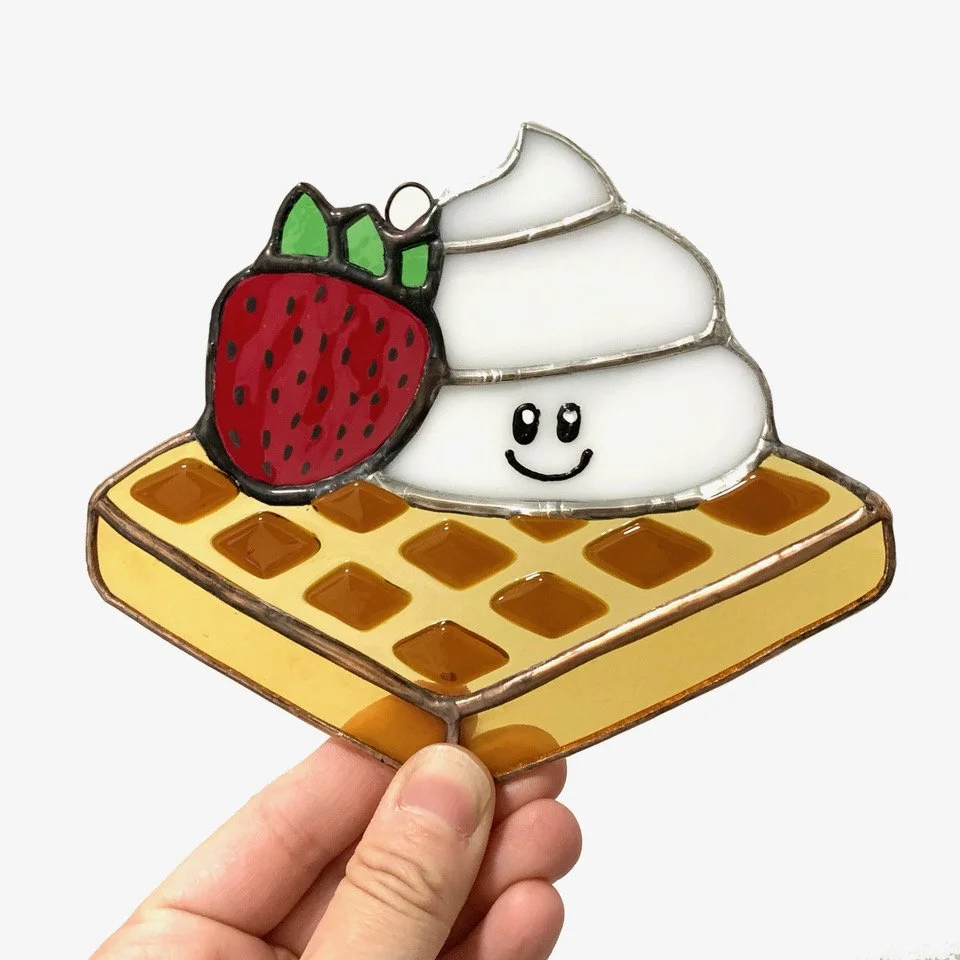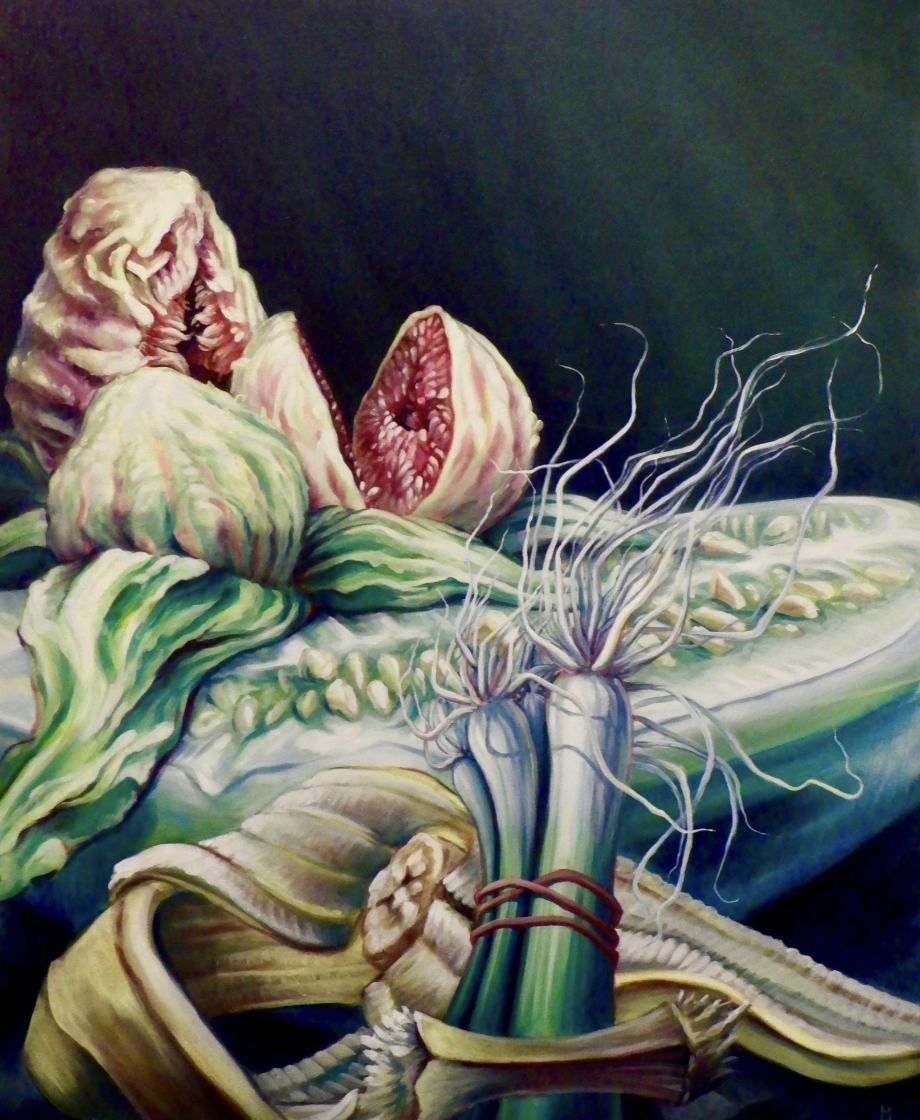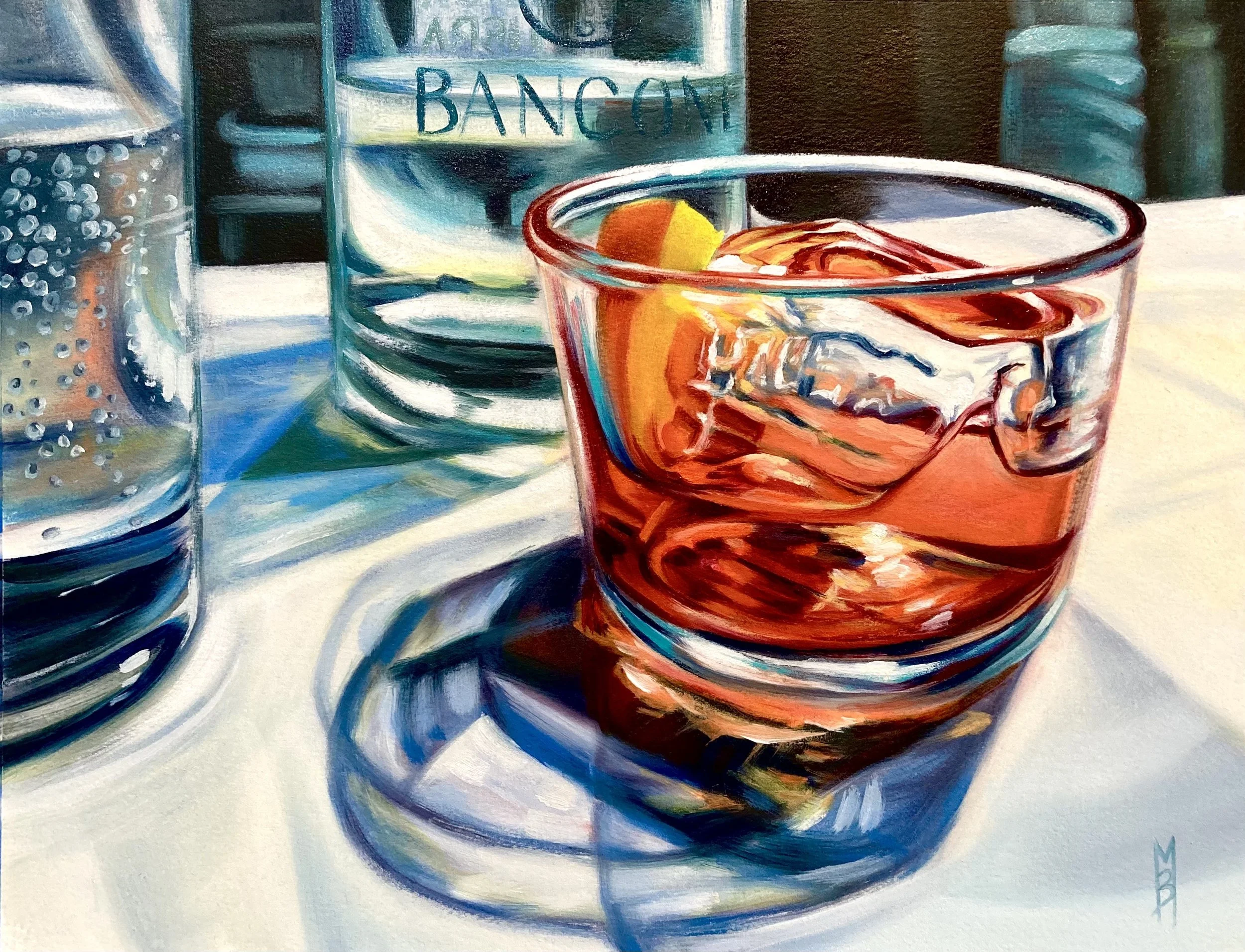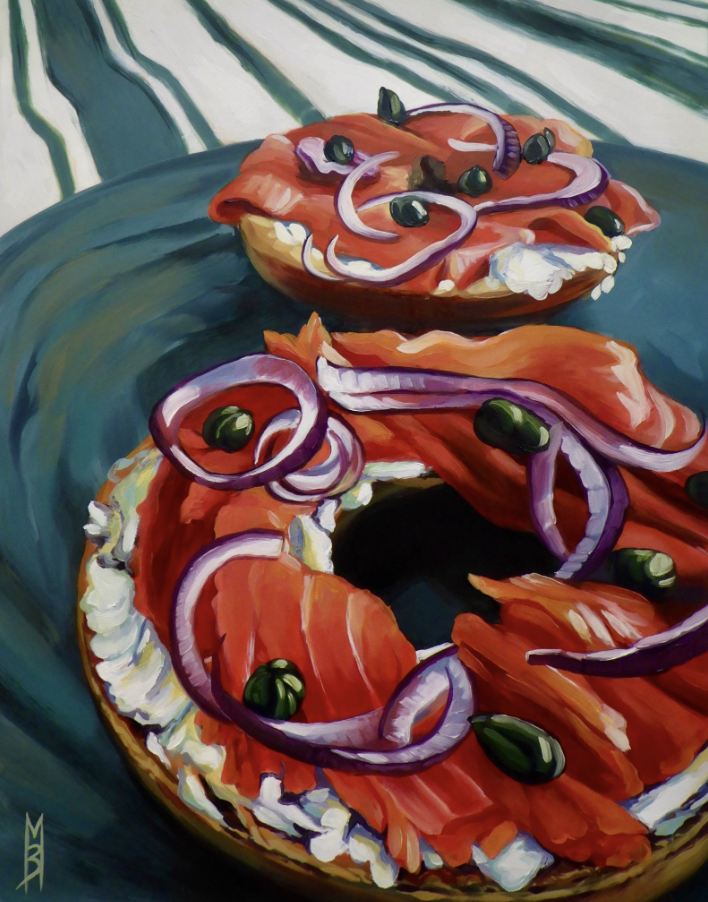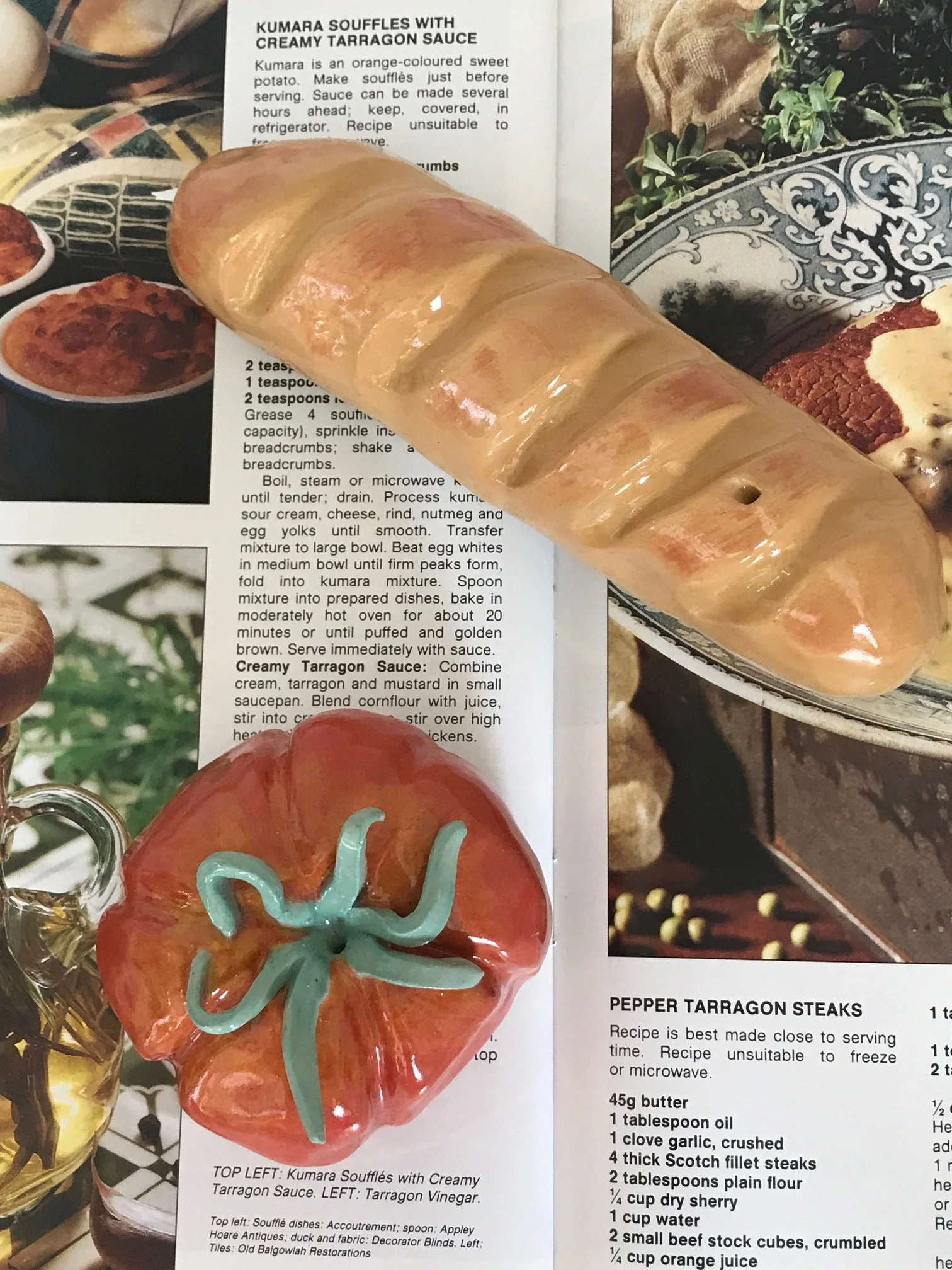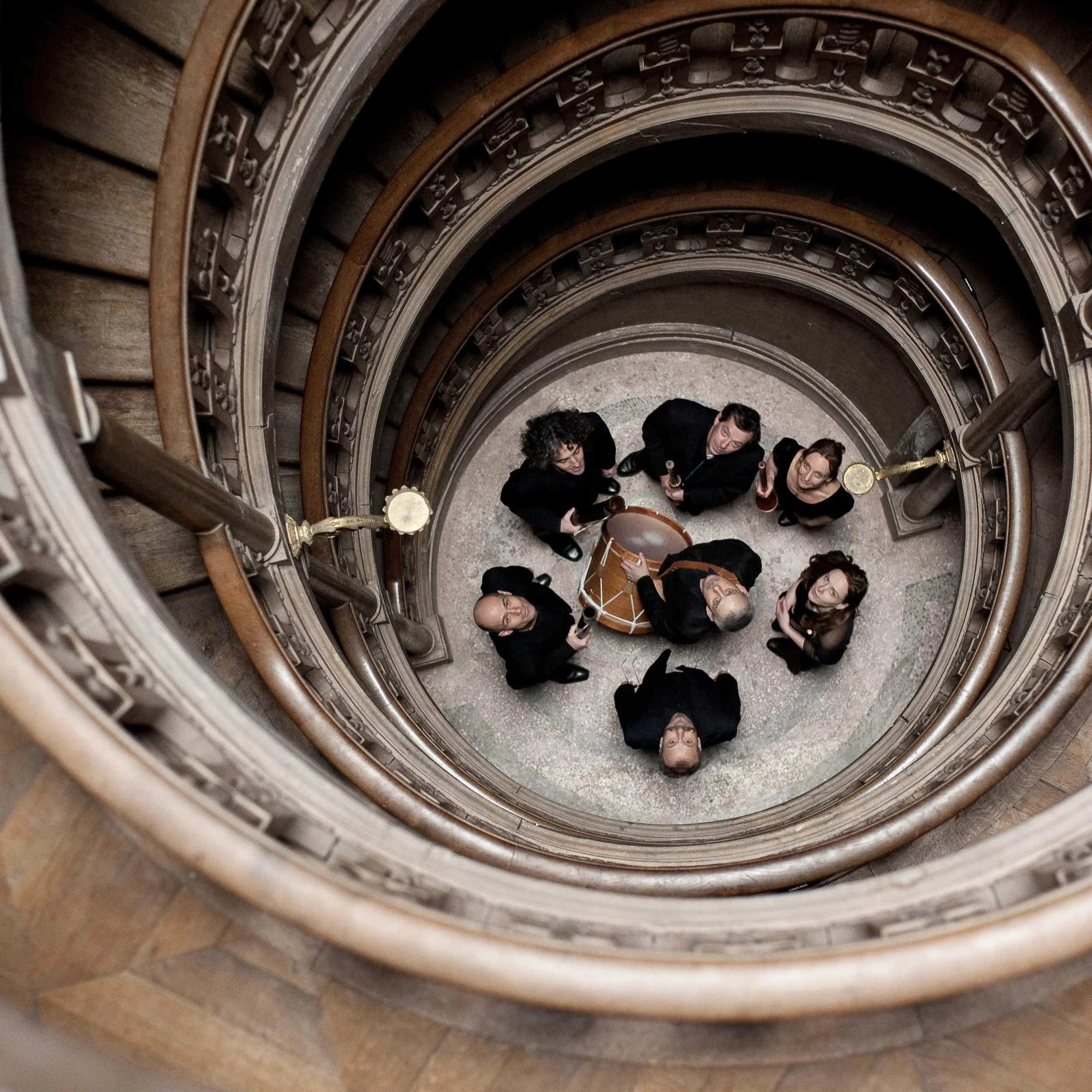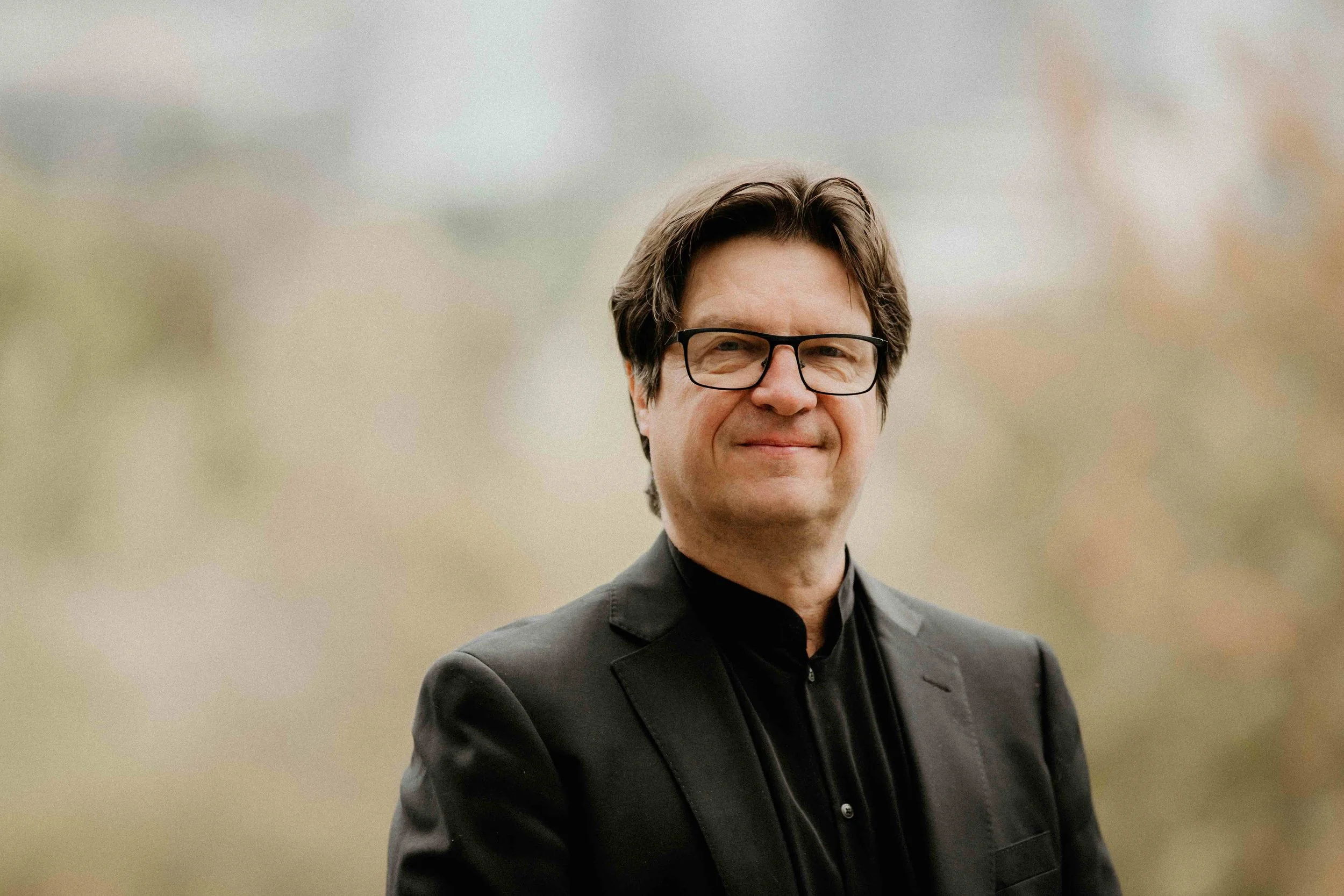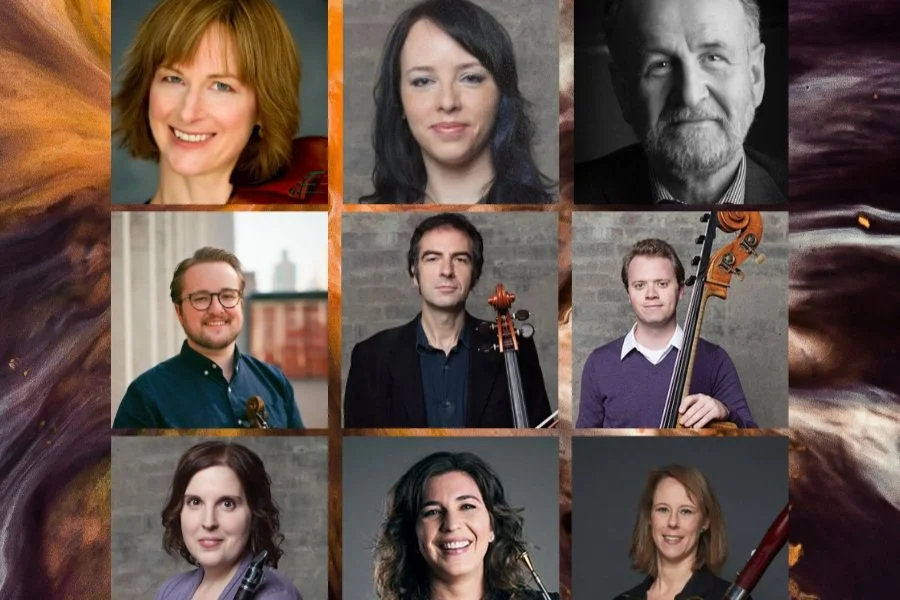Eastside Culture Crawl: Artists dig into food as fodder for their creations
Three Vancouver artists working in different media talk about finding inspiration in the culinary world
Bronwyn McIvor, Feast of Poets. Photo by Bronwyn McIvor.
FOOD HAS PLAYED a role in art since time immemorial. Egyptians carved pictographs of bread on hieroglyphic tablets, and Renaissance masters depicted all manner of edible goods in glistening still lifes. Today, food is a prime subject of a handful of artists taking part in the Eastside Culture Crawl.
Stir connected with three such creatives who are stirring things up with their culinary-inspired creations.
Corinne Leroux.
Corinne Leroux, Awesome Sauce Designs
Corinne Leroux has been doing stained glass for nearly two decades and started working with fused glass in 2023. She has always been a creative person, long interested in practices like knitting, painting, and ceramics. She went to post-secondary school for graphic design and earned a degree in interactive arts from Simon Fraser University. She has been teaching beginner-friendly stained-glass and fused-glass workshops in her studio at MakerLabs since 2016.
“Shortly before graduating from university, I took a stained-glass class and was instantly hooked,” Leroux tells Stir. “It initially started as a hobby, but then eventually I started to sell my work. My business has morphed over the years where I do a mix of selling my own work and teaching other people how to do stained glass. It’s so nice to see the pride others have after creating their first stained-glass piece.
“I love how happy it is and how happy it makes other people when I see them admiring my work,” she adds. “I love making things that are different and very untraditional from what you think of when thinking of stained glass. It’s a new twist on a very old art form.”
Corinne Leroux.
As far as food being an inspiration in her work goes, Leroux says she can’t pinpoint exactly what the appeal is. “Honestly, I have no idea,” she says with a laugh. “It’s something that I’ve always just made and have fun making. I guess I just like having fun with it and ‘playing with my food’.
“I wouldn’t say it’s meant to make a statement, but rather to spark joy,” she says. “I like to do cute things to brighten people’s day and put a smile on their face.”
Bronwyn McIvor, La Baignoire. Photo by Bronwyn McIvor
Bronwyn McIvor
Specializing in painting and drawing, Bronwyn McIvor attended Langara College’s fine arts program and completed her BFA at Emily Carr University of Art + Design. She is keenly interested in getting at the intersection of the beautiful and the grotesque, the mundane and the otherworldly, and that which attracts and that which repulses.
The Undiscovered Kitchen is her series of food paintings, mostly in oil, which focus on the detritus of everyday meal planning—rather than the pristine items showcased in the Dutch still lifes that continue to inspire her. She starts out by taking photos of foodstuffs, getting unusual angles or closeups. She then references the images for her paintings, often collaging different photos into a single work, giving strange life to everything from onions and pomegranates to figs and papayas.
“I've always been interested in sharing my slightly strange vision of the world through art, and have been lucky enough to find the encouragement—and the studio space—to pursue that,” McIvor says in an interview with Stir. “Finding an audience that enjoys my particular viewpoint has allowed me to create more work and continue to explore new themes and subjects in my artistic practice.
“I love getting into the details in my subjects, finding the beautiful colour relationships and strange details that make things entrancing and eerie,” she says. “The sumptuous quality of oil paints allows me to explore the richness and weirdness of my paintings—I'm endlessly fascinated by the ongoing exploration of colour, brush stroke, and the materiality of paint.”
Bronwyn McIvor, Bancone Negroni. Photo by Bronwyn McIvor
McIvor’s interest in food as a subject matter came about one evening when she was cooking dinner and happened to be thinking about painting while she stopped to look at some pepper cores—to really look at them.
“I’m fascinated by just how weird and otherworldly the very mundane matter of food actually is, when you look at it closely,” McIvor says. “It's easy to focus on the perfect, finished dish and to overlook the peels, pits, and offcuts that went into its making, and so I am also interested in what happens when these messy remnants are given pride of place in a painting.”
Bronwyn McIvor, Lox On. Photo by Bronwyn McIvor
McIvor describes herself as a bit of an art-history nerd, and she has been working on a series called Eating the Masters that takes the compositions of old masters paintings as the basis for her food paintings. Think artists like Jacques-Louis David, Eugène Delacroix, and Théodore Géricault.
“I like transforming these grand history paintings into scenes of everyday kitchen chaos, which nevertheless still have the drama and intensity of their original subjects,” she explains.
Rather than aim to make a statement with her artwork, she strives to evoke an invitation. “Take a moment and look deeply at the world around you,” she says. “Stop and see the strange details, the unexpected beauty, and the weirdly fascinating parts of life that you take for granted. Find the beauty in the grotesque and the otherworldly in the everyday.”
Daryn Wright, tomato and baguette. Photo by Daryn Wright
Daryn Wright
Daryn Wright is a ceramicist, painter, and installation artist who often explores food, folklore, and domesticity with a sense of fun and irony. Recent exhibitions include Aphrodisiac Cookery: Ancient and Modern at 4 by 4 on 5th in Vancouver, and a photo essay entitled “Eat Your Cake” in Babbles 003: Mealtime. She has a master’s of publishing from Simon Fraser University.
Wright embarked on a career in the arts, after working full-time as a food writer while also raising an infant, when she became burned out and disillusioned with the media industry.
“I’d had a visual arts practice for a while, but it had been put on the back burner for so long because I was too busy,” Wright tells Stir. “I decided I needed a drastic change in my life, so I quit my job, applied for arts grants, and devoted myself entirely to my practice. What I do now feels like a different, more interdisciplinary application of my storytelling skills.
“I love that I can play around and use my hands and I don’t need to follow someone else’s directives,” she says. “My work is often playful and cheeky and unserious, and it’s fun to get to imagine things and then make them into a reality.”
Daryn Wright, asparagus plate and lemon candle holder. Photo by Daryn Wright
Food has long been a keen interest of hers. She first learned the love of cooking for other people, then turned her focus into writing about food.
“Food has always been central in my life, and I think it’s probably because it feels like one of the great equalizers; people can always come together over food and drink, no matter what their background,” she says. “Plus, it can be so textural and visceral, and of course that lends itself well to clay and sculpture. A mess of orange peels or a giant loaf of fake bread is just so satisfying to behold, because it mimics reality but it’s uncanny at the same time.”
Daryn Wright. Photo by Daryn Wright
Many of Wright’s projects are grounded in extensive research, including the use of archival material, family photographs, and vintage cookbooks.
“I think some of my bigger, more multi-disciplinary projects aim to query things like cultural belonging, domestic expectations, and the ways in which mental illness can colour experience,” Wright says. “But then my other pieces feel like pure play. They’re meant to make people laugh, make them hungry, and hopefully make them want to invite more irreverent art into their lives.” ![]()




